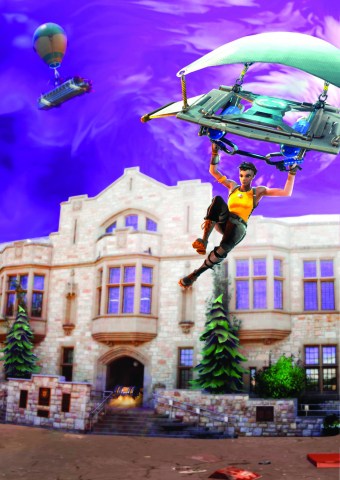With 45 million players globally as of mid-January, Fortnite by Epic Games has not only taken the gaming world by storm but is also set to become a cultural phenomenon in its own right — and the growth doesn’t appear to be slowing down any time soon.

These player numbers are largely dedicated to the game’s battle-royale mode, a video-game genre that has become increasingly popular lately. The genre has been brewing since 2012 but was largely constrained to mods of other games until H1Z1 hit Steam’s early access program in 2015.
The first of these mods was inspired by the Hunger Games franchise and was developed for the game Minecraft. One of the genre’s pioneers Brendan “PlayerUnknown” Greene later created a series of battle-royale mods for the ARMA series and its stand-alone spinoff DayZ. Greene went on to consult for the first stand-alone battle-royale game, H1Z1, and then to eventually craft PlayerUnknown’s Battlegrounds, which saw a beta release in March 2017.
Fortnite Battle Royale, released in September 2017, builds on this history with its own installment of the battle-royale genre. Fortnite was originally solely a player-versus-environment experience before expanding to include a free-to-play battle-royale mode.
The main concept of Fortnite Battle Royale is that 100 players drop down onto the map and parachute to various locations. From there, players gather loot and resources, while attempting to eliminate other players in hopes of being the last one standing.
To force players into confrontations, a circle is marked as the safe zone shortly after the start of a match. The circle then shrinks in phases until a player wins. Any players outside of the safe zone will take damage until they either get into the safe area or run out of health.
Many like to compare PUBG and Fortnite, as they are currently dominating the battle-royale genre. In terms of concurrent players and total downloads, Fortnite has topped PUBG. However, the obvious argument to be made here is that a free-to-play game will outpace a paid game simply because the only barrier to playing is owning a platform to run it on.
Add to this the fact that Fortnite has been released on PC, Mac, PlayStation 4 and Xbox One — while PUBG has only seen a full release on PC and a beta release on Xbox One — and it seems obvious that Fortnite is leading in numbers and influence.
However, I would argue that the draw to Fortnite isn’t that simple. The game has seen constant updates since its release, which have kept the game fresh, while PUBG is somewhat stagnant. Add to this the smooth feel and general lack of game-breaking bugs and it becomes obvious why Fortnite is so popular.
Outside of the mechanical reasons for Fortnite’s popularity, one must also consider its aesthetic appeal. The purchasable skins and emotes are quite unique. Additionally, there is a complete absence of loot boxes — a system that has become infamous.
The mechanics and aesthetics come together to form a very cohesive experience, where players can fly around on gliders, hide in bushes and blast other players in the face with shotguns. The popularity and appeal of the game are evident on the livestreaming website Twitch, where Fortnite amasses hundreds of thousands of viewers.
In fact, the game recently broke a record on Twitch when Tyler “Ninja” Blevins — one of Fortnite’s most celebrated streamers — teamed up with rappers Drake and Travis Scott and Pittsburgh Steelers receiver JuJu Smith-Schuster. The stream broke the viewership record for an individual streamer, gathering almost 630,000 viewers at one time.
With the mobile version of Fortnite hitting iOS now, the game continues to evolve and doesn’t seem to be slowing down anytime soon.
—
Jack Thompson / Sports & Health Editor
Photographic illustration: Jeremy Britz / Web Editor